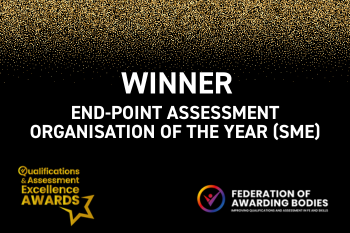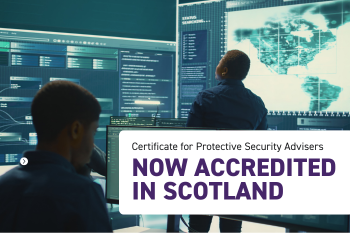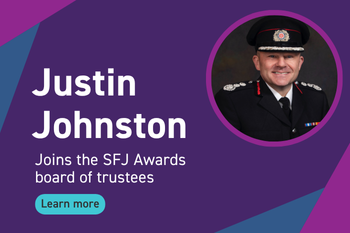Martyn’s Law – formally The Terrorism (Protection of Premises) Bill – is a bill currently being considered by parliament that aims to better protect the public from terror attacks by requiring public venues to improve preparedness and have systems in place to help keep people safe.
It is known as Martyn’s Law in tribute of Martyn Hett who was killed alongside 21 others in the 2017 Manchester Arena attack, and Martyn’s mother has campaigned for these changes in the years since.
The law covers both venues that are mainly used for gatherings of people, and venues that are used for events (such as those for festivals, where the main use is not as a venue).
Read our Martyn’s Law explainers for more information:
- What is Martyn’s Law and how will it impact the security sector?
- Which venues are in scope and which aren’t?
- Martyn’s Law explained: Standard Duty
- Martyn’s Law explained: Enhanced Duty
Jump to:
- What is a responsible person?
- What does a responsible person have to do?
- What will a responsible person need to consider in setting procedures?
- How will responsible persons be regulated?
- Documenting compliance for Enhanced Duty venues
- Does the responsible person have to be an individual?
- How does it work if there are more than one responsible officer for a venue?
- What training and qualifications will a responsible officer need to have?
- Get in touch
What is a responsible person?
Every venue or event in scope of Martyn’s Law will need to have a named responsible person. They are required by law to ensure that the venue is compliant with the regulations as far as reasonably practicable.
What does a responsible person have to do?
The responsible person is required to ensure that effective procedures are in place to reduce the risk of harm, and to manage the response in the event of a threat. These procedures are based in four key areas:
- Evacuation – the process of getting people safely out of the premises
- Invacuating – the process of bringing people safely into, or to safe parts within, the premises
- Lockdown – the process of securing the premises to ensure that the entry of any attacker is restricted or prevented, e.g. locking doors, closing shutters or using barriers
- Communication – the process of alerting people on the premises to move them away from any danger
The procedures put in place will depend on the capacity of the venue or event, with different regulations for venues or events of 200-799 capacity (Standard Duty) and venues or events with 800+ capacity (Enhanced Duty). Not all venues or events are in scope of the bill, with some, such as educational premises, excluded from the regulations. Learn more about which venues are in scope and which aren’t.
What will a responsible person need to consider in setting procedures?
Martyn’s Law compliance is principles based. Each venue or event, and their responsible person, will need to set new procedures after considering their venue, to areas outside of the venue, routes of access, and other policies and procedures such as health and safety. Venue capacity, type of venue, and other factors will inform what security measures can and should be put in place to reduce risk of harm.
In addition, the law specifies that these procedures are put in place as far as is reasonably practicable. In this regard it follows other responsibilities, such as fire and safety, or data protection.
This means that the responsible person will need to consider all the factors above and what resources are available to them, in order to put security measures in place.
What may be reasonably practicable for a venue of up to 800 capacity with multiple entry and exit routes and members of staff, would not, for example, be reasonably practicable for a smaller venue of 200 capacity with volunteer staff.
How will responsible persons be regulated?
The responsible person will need to notify the Security Industry Authority (SIA) that they are the responsible person for a venue or event. They will also need to notify the SIA when they are no longer the responsible person.
They will need to share their details, and the details of the security procedures put in place to be compliant with regulations.
Documenting compliance for Enhanced Duty venues
Responsible persons are required to record and provide information to SIA in relation to their procedures and measures. The documentation should cover:
- Public protection procedures they have in place (or will put in place) to remedy or mitigate risk
- Public protection measures in place (or will put in place) to mitigate vulnerabilities or risks
- Reasoning on how procedures and measures will reduce vulnerabilities and risk in the event of a terrorist attack
Venues are responsible for keeping this documentation up to date and submitting any revised versions to the SIA within 30 days. This documentation will be used by the SIA to assess compliance.
Does the responsible person have to be an individual?
No. The named responsible person may be an organisation who has responsibility for setting compliant procedures for a venue or event. For example, if a stately home hosts an event in an outdoor area, the stately home would be the responsible person. Responsibility cannot be delegated to contracted services.
However, if the responsible person is not an individual, the venue or event will also need a designated senior individual (DSI). The DSI must be responsible for managing the affairs of the responsible person as a whole (such as a senior manager, head, or director) – their function is to ensure that the responsible person complies with the regulations and that senior management are a part of the decision making.
How does it work if there are more than one responsible officer for a venue?
If there are multiple responsible persons – for example, there are two or more organisations responsible for security at a premises – then the law provides for co-operation and co-ordination principles to apply. These must be detailed in any procedures in place in order to comply with the legislation.
What training and qualifications will a responsible officer need to have?
The responsible officer may need training in order to ensure that they understand their duties under Martyn’s Law and are able to set new procedures and policies which are effective and in line with the legislation. They will likely need to be a qualified security professional with a registered SIA license.
Training for other staff or volunteers will need to be considered in order to ensure procedures can be carried out effectively. The procedures will need to be communicated to all those required to deliver the response to a potential security incident.
This may call for premises and events to update or provide new training in light of the changes in the law, or any updated security procedures, policies, or measures, to ensure staff are capable of carrying out their job roles effectively.
Get in touch
SFJ Awards are the leading awarding body and End-Point Assessment Organisation for the protective services sector, specialising in security, resilience, protection, and justice. Get in touch today to find out how we can help.
"*" indicates required fields





